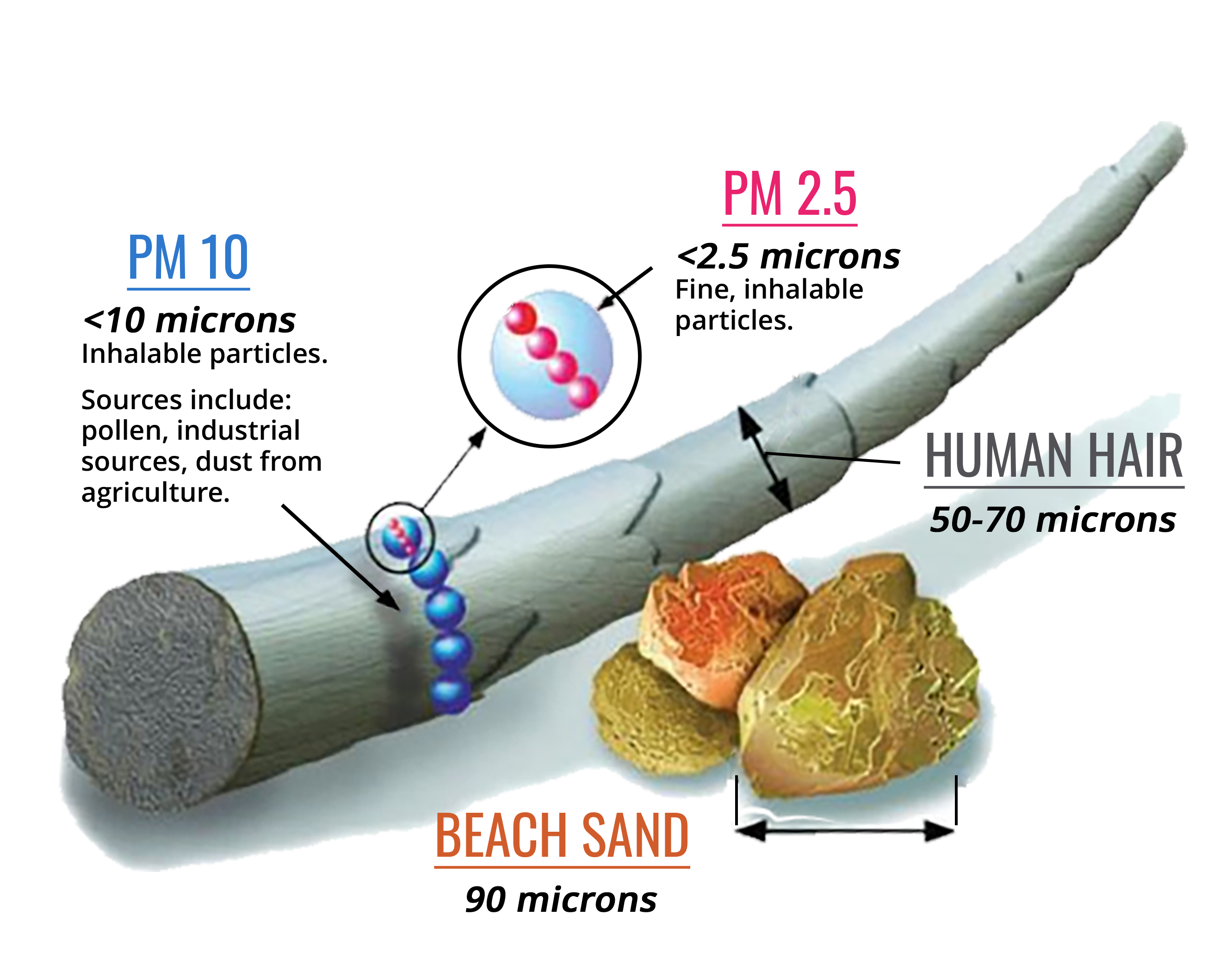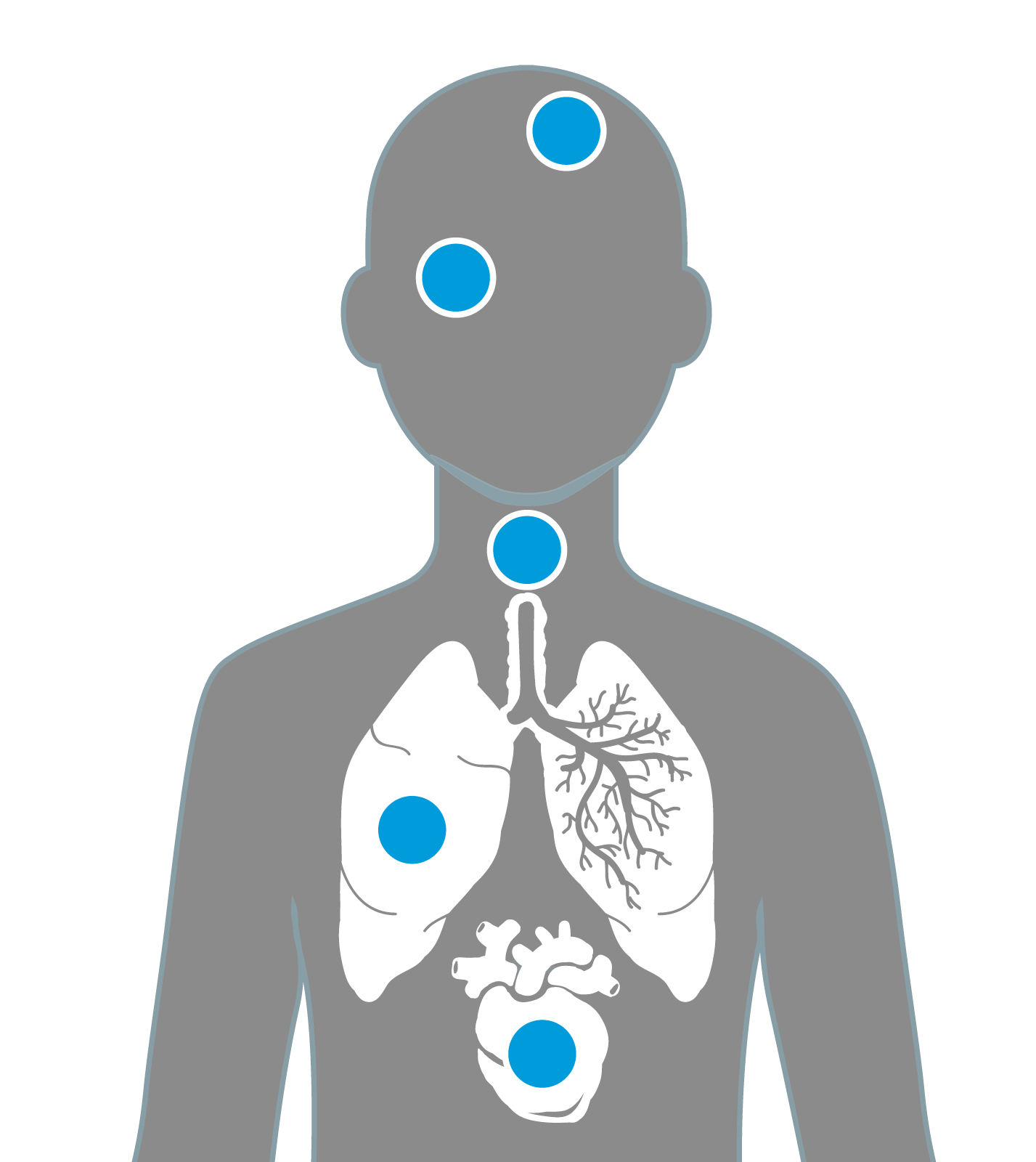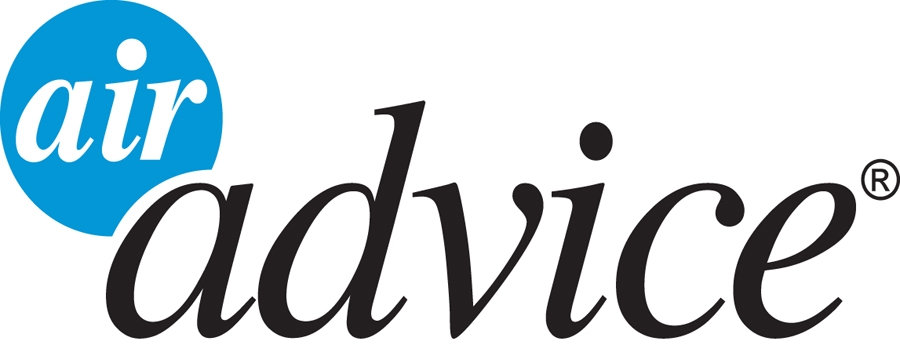PARTICULATE MATTER
Airborne particles can irritate the eyes, nose, throat, and lungs and increase respiratory problems, especially in those with preexisting medical conditions, such as cardiovascular illness and immune system diseases.
The good news is, with proper management, you can control the levels in your home, and bring them down to a safer level. Your contractor can help you problem solve and get your home to the best version of itself.
WHAT ARE PARTICLES?
Particles, or particulate matter (PM) is a microscopic mixture of solid dust particles and liquid droplets found in the air, invisible to the eye. The smallest particles pose the greatest health risk. PM 2.5 is small enough to get in the deepest part of our lungs and even into the blood stream.
- Your contractor used AirAdvice’s calibrated M5200 IAQ Monitor to measure particles in the range of 0.3 to PM2.5 microns.
- Examples of PM 2.5 particles include (but are not limited to): bacteria and viruses, cigarette smoke, lead dust, and asbestos.
- PM 10 particles (measured with old monitors) include allergens such as: dust mites, pet dander, pollen, mold, and microscopic dust.
- A micron (or micrometer) is one millionth of a meter. For perspective, a human hair is about 50-70 microns in diameter.
- Particles less than PM 50 are not visible.
- Because there is no established safe level of PM 2.5, experts recommend achieving the lowest level that is reasonably possible.
- The good news: filtration is a safe, proven method to remove particles. And properly vented kitchen exhaust can remove particles from the source.

HEALTH CONCERNS
- Cognitive decline
- Eye irritation
- Asthma attacks
- Lung and throat irritation
- Trouble breathing
- Lung cancer
- Increased hospitalizations for heart and lung disease

POTENTIAL CAUSES
- Combustion: cooking, candles, improperly vented combustion appliances
- Activities in the home such as cleaning and housework
- Heating and cooling system issues
- Pollution that originates from outside sources (pollen, wildfire smoke)
AIRADVICE PROTIP:
Go beyond central air cleaning by adding portable HEPA where you spend the most time. Here’s how.
